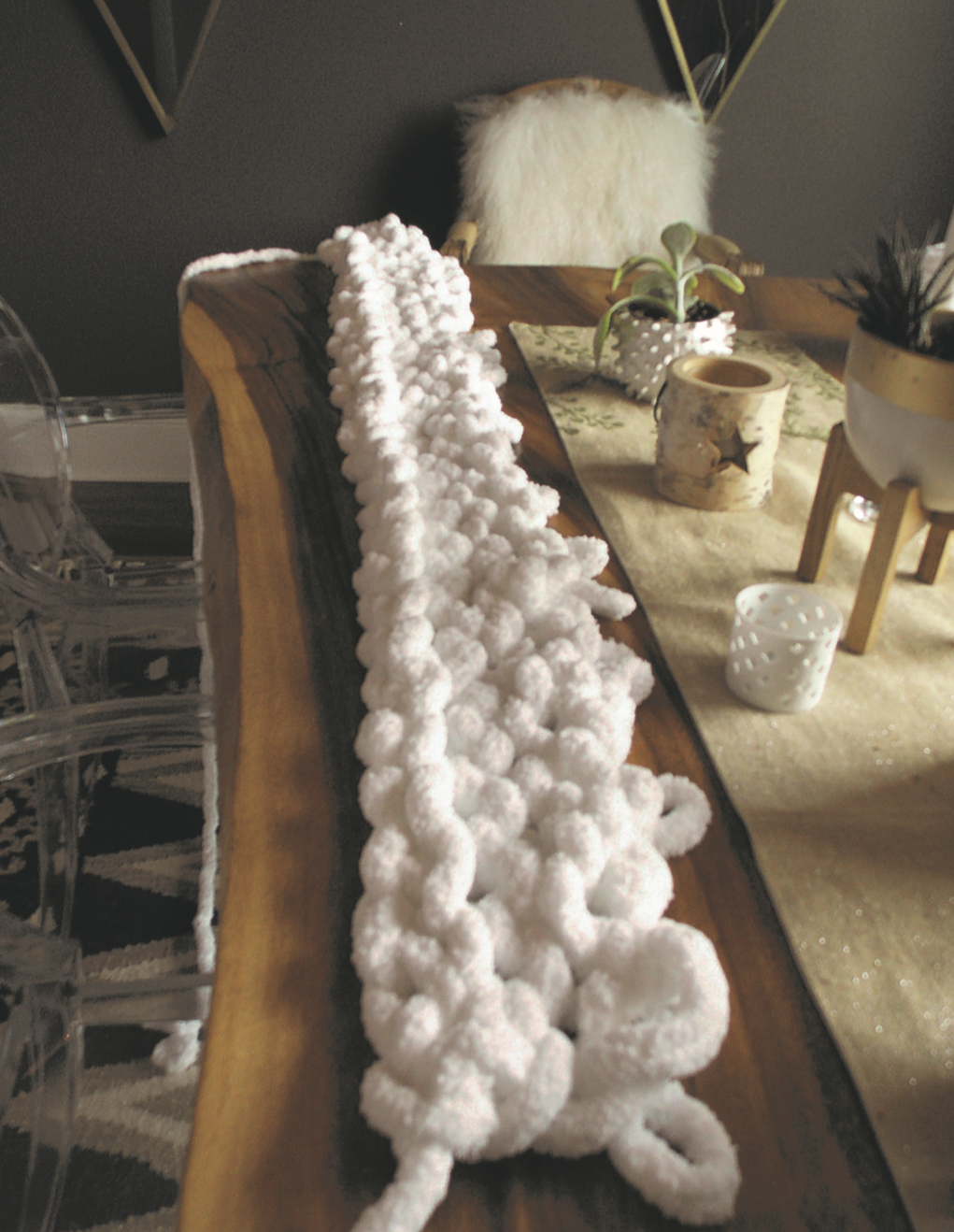Warm and Cozy Hand Knitting – the Latest Trend in Fiber Art

Warm and Cozy
Hand Knitting – the Latest Trend in Fiber Art
By DeDee Birdsall
We’re fast approaching the winter months, and we all know it’s the best season for us crafty people. We love to hunker down, have a couple of warm toddies and create on those long, cold winter nights. But this year, we’re casting aside our old hobbies and learning the trendy art of hand or arm knitting. It’s easy, produces professional results and will have your friends thinking you’ve spent hours creating an artisanal piece worthy of any designer home store.
Feeling a little skeptical about knitting? Think it’s a dated hobby reserved exclusively for old ladies? Well, think again. Recent studies indicate knitting is on the rise in the younger generation. Many knitters today include millennials, men, and even school age children. With projects as easy as the chunky, oversized throw and amazing yarn that helps you get stylish results with little effort, it’s no wonder so many people are jumping on the hand knitting band wagon.
To get started, all you need is a bottle of wine (ok, that’s not mandatory, but it is fun), chunky yarn, basic instructions, and a few friends for your first knit and sip party. What a perfect way to spend a winter evening!
The Knitty Gritty of Arm and Hand Knitting
Arm or hand knitting is just like regular knitting except your arms or hands are the needles and all stiches are oversized. Because of the oversized stitches, you can master a chunky throw in a few short hours, accomplishing that trendy look of an exaggerated cable knit sweater currently seen at craft shows, farmers markets, Etsy and our favorite site, Pinterest! If you’re already a seasoned knitter, this version will be a cinch since it refers to a variety of steps and terminology you’re already familiar with. If you’re a newbie, no worries! There are several tutorials that will have you on your way in minutes.
We reviewed both the hand and arm knitting techniques and, despite producing the same end result, found that hand knitting is easier to master, less cumbersome timewise and allows you to work on your project at your leisure, easily stopping and starting as needed.
Keep Calm and Cast On – Getting Started
First off, penny pinchers beware–this is not a cheap project or hobby, especially if you’re using the most popular (and warmest) Merino wool. You may want to consider doing a chenille or synthetic yarn project first before blowing the dough on the expensive stuff. Depending on the size of your blanket, you can do a chenille version (especially with sales and coupons) for under $50. Sure, it’s a bit on the expensive side but you’ll pay twice that for most online versions of the same style, and the thrill of the creation is lost!
It’s All About the Yarn
You can purchase synthetic yarns, like the chenille we used in our blanket, at Hobby Lobby, Michaels and JoAnn Fabrics. Merino wool can be purchased from several online retailers like BeCozi, Amazon, and Etsy, or you can check your local Sin City Knit Shop in Las Vegas. There’s even yarn with premade loops that makes this hobby even easier.
Determining how much yarn is needed can be tricky. We found a helpful chart from “Truly Majestic” to get you started on several different sized blankets; however, keep in mind the yarn amount can vary greatly by the length of your stitches and the material you use. For a better understanding, watch the video on https://trulymajestic.com/much-yarn-arm-knit-blanket/.
What Terminology Do I Need to Understand?
Knitters do have their own language and not just technical terms. For hand or arm knitting, you will need to understand just a few and, most importantly, in this order.
- Slip Knot: This knot functions as the first stitch in your knitting project, or the starting point.
- Cast On: This is the groundwork that forms the base for your project. It establishes the first row of loops.
- Working Yarn: This is the yarn that goes from your ball of yarn to what you’re currently knitting on. It’s your “active” yarn, what you use to actually knit with.
- Bind (or Cast) Off: This is how you secure your loops at the end of your project.
- Stockinette Stitch: Basic knitting stitch used in the chunky throw.
Tips for Newbie Knitters
- Identify your work surface. Using a large, flat surface or crafting table you can leave up works best for hand knitting, as you can leave your project and come back to it at any time.
- Utilize tutorials. YouTube is an awesome resource for amazing tutorials. We really like those we found on the Becozi site, as well as eHow’s “How to Hand Knit a Blanket” video. They’re helpful and explain the project so even the non-knitter can easily understand. Beyond BeCozi, a simple Google search produces hundreds of results for both hand and arm knitting.
- Prep your project. Open the skein of yarn and roll it into a ball. This makes for easier stitching.
- Determine stitch length. If you decide on a three-or-four-inch loop or stitch, use a tape measure to accurately measure each loop until you feel comfortable “eyeballing” each stitch. Count the number of loops you need in each row and pay close attention when beginning each row; this keeps your blanket true to size.
Ladies, Start Your Blankets!
If you’re sittin’, why not be knittin’? Begin with a YouTube video to get a visual on stitching, find the perfect yarn and be on your way to knitting your first chunky throw. We promise, you’ll become obsessed with the results, knitting blankets, scarves, beanies, even dog beds before you know it!






